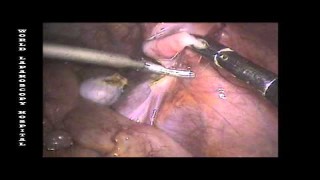Ideal Method of Tying Surgeons Knot by Da vinci Surgical Robot (Training Video)
Add to
Share
292 views
Report
2 months ago
Description
The surgeon’s knot is one of the most fundamental techniques in surgery, providing secure tissue approximation with added friction that prevents loosening during knot placement. With the advancement of robotic surgery, particularly using the Da Vinci Surgical System, mastering this knot with robotic instruments is essential for surgeons in training. This training video on the Ideal Method of Tying Surgeon’s Knot by Da Vinci Surgical Robot demonstrates the precision, control, and ergonomics offered by robotic-assisted surgery, while emphasizing the correct steps to ensure knot security. Key Highlights of the Training 1. Introduction to Surgeon’s Knot in Robotic Surgery The surgeon’s knot differs from a simple square knot by incorporating an extra twist in the first throw. In robotic surgery, this technique is enhanced by the fine articulation and wrist-like motion of the EndoWrist® instruments of the Da Vinci robot. Surgeons can achieve greater consistency in knot tying within deep pelvic or thoracic cavities where manual access is limited. 2. Step-by-Step Demonstration Needle and Suture Positioning The video begins with correct orientation of the suture in robotic graspers. Emphasis is placed on avoiding suture fraying and maintaining appropriate tension. First Throw (Double Wrap) The right robotic arm performs a controlled double wrap around the left instrument. This step provides additional friction, ensuring that the knot remains stable during the second throw. Second Throw (Opposite Direction) A single wrap is made in the reverse direction, creating a flat, secure square knot. The robotic instruments allow exact wrist articulation, preventing crossing errors. Subsequent Throws Additional throws (commonly 3–4) are demonstrated to reinforce the knot. Each throw is laid flat and tightened evenly to prevent slippage. 3. Advantages of Using Da Vinci Robot for Knot Tying Enhanced dexterity: 7 degrees of freedom mimics human wrist motion. Superior visualization: 3D HD vision magnifies fine movements. Stable knot placement: Tremor filtration ensures smooth tension application. Access in confined spaces: Critical for urological, gynecological, and colorectal surgeries. 4. Common Errors to Avoid Crossing the suture during throws, leading to an insecure knot. Applying uneven tension that may break delicate sutures. Inadequate number of throws, increasing risk of knot failure. Over-tightening, which may cause tissue strangulation. 5. Training Relevance The video is part of robotic skill enhancement modules at World Laparoscopy Hospital and other robotic training centers worldwide. Surgeons and gynecologists learn not only the mechanics of knot tying but also the principles of tissue handling and robotic efficiency. Conclusion The Ideal Method of Tying Surgeon’s Knot by Da Vinci Surgical Robot showcases how robotic-assisted platforms refine traditional surgical skills. By combining classical techniques with cutting-edge technology, surgeons achieve superior outcomes in complex procedures. This training video serves as an essential guide for robotic surgery trainees, ensuring that every surgeon develops the precision and confidence required in modern minimally invasive surgery.
Similar Videos






